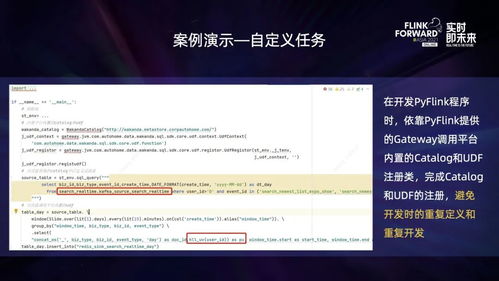flink编程语言
Title: A Comprehensive Guide to Flink Stream Processing
Apache Flink has emerged as a powerful framework for stream processing applications, offering high throughput, low latency, and fault tolerance. Whether you're a beginner or an experienced developer, understanding Flink's core concepts and programming model is crucial for building robust and scalable stream processing pipelines. Let's delve into the world of Flink computation programming.

Introduction to Flink
Apache Flink is an opensource stream processing framework known for its capability to process largescale data streams with low latency and high throughput. It supports both batch and stream processing, making it suitable for a wide range of use cases, including realtime analytics, eventdriven applications, and continuous data processing.
Core Concepts
1. Stream Processing
In Flink, data is processed as continuous streams, allowing for realtime analysis and computation. Stream processing enables the handling of infinite datasets by processing data as it arrives, rather than storing it and processing it later.
2. DataFlow Graph
Flink programs are represented as directed acyclic graphs (DAGs), where nodes represent operations (such as mapping, filtering, aggregating) and edges represent data streams. This abstraction allows Flink to optimize the execution of data transformations.
3. Operators
Operators are the building blocks of Flink programs. They perform various transformations on data streams, such as `map`, `filter`, `reduce`, `join`, and `window`.
4. State Management
Flink provides builtin support for managing stateful computations in stream processing applications. State can be maintained across events within a specified window or time interval, enabling tasks like sessionization and aggregation.
Flink APIs
1. DataStream API
The DataStream API is designed for building continuous data processing applications. It offers a fluent and expressive API for defining transformations on data streams using operators like `map`, `filter`, `flatMap`, `window`, and `aggregate`.
2. DataSet API
The DataSet API is used for batch processing in Flink. It provides similar functionality to the DataStream API but operates on bounded datasets rather than unbounded streams.
3. Table API & SQL
Flink also supports querying and processing data using SQL queries and relational operations through the Table API. This provides a familiar interface for users familiar with SQL.
Key Components
1. JobManager
The JobManager is responsible for accepting Flink programs, creating execution plans (DAGs), and coordinating the execution of tasks across the cluster.
2. TaskManager
TaskManagers are responsible for executing individual tasks assigned by the JobManager. They manage the execution of operators and handle data exchange between tasks.
3. State Backend
State backends are responsible for storing and managing the state of Flink applications. Flink supports various state backends, including inmemory, filesystem, and distributed storage systems like Apache Hadoop's HDFS and Apache RocksDB.
Deployment Options
1. Standalone Deployment
In standalone mode, Flink can be deployed on a single machine or a cluster of machines without relying on external resource managers.
2. YARN/Mesos/Kubernetes
Flink can also be deployed on resource managers like YARN, Mesos, or Kubernetes, allowing for dynamic resource allocation and management in a distributed environment.
Best Practices
1. Optimize State Usage
Minimize the use of stateful operations and choose appropriate state backends based on your application's requirements to optimize performance.
2. Ensure Fault Tolerance
Utilize Flink's builtin fault tolerance mechanisms, such as checkpointing and state snapshots, to ensure data integrity and fault recovery in the event of failures.
3. Scale Horizontally
Design your Flink applications to scale horizontally by partitioning data and distributing tasks across multiple TaskManagers for improved throughput and fault tolerance.
Conclusion
Apache Flink offers a powerful platform for building realtime stream processing applications with high throughput, low latency, and fault tolerance. By understanding its core concepts, APIs, and deployment options, developers can leverage Flink to implement robust and scalable data processing pipelines for various use cases.
This guide provides a solid foundation for getting started with Flink computation programming, but there's much more to explore as you dive deeper into the world of stream processing.









